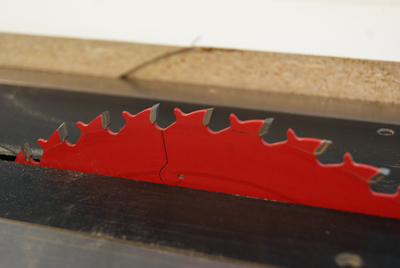
I recently purchased a new 10″ cabinet table saw. It has a 3 hp motor and is wired with 220-volt electricity. The owners manual warns not to use the new thin blades. Since this an addition to my shop and I still have my old saw in operation I am wondering what’s the reason. I have a number of thin blades and I like how they cut. I send them to be sharpened on a regular basis at a professional blade sharpening company. What is the danger in using a thin blade? Should I continue to use a blade that is thick? If I should use a thin blade could it damage my new saw or even my old saw which is a contractor type saw? And of course will it void my warranty? – Joe Bozarth
Chris Marshall: I’m not exactly sure why the manufacturer of your new cabinet saw is warning against thin-kerf blades, but here’s one possible explanation. Most new cabinet saws now have riving knives that rise and fall with the blade to satisfy new safety regulations. Since your saw is 3-hp and designed for full-thickness (1/8-in. kerf) blades, the thickness of that riving knife is probably just shy of 1/8-in. to accommodate the kerf opening made by the blade. A thin-kerf blade will cut a narrower kerf than the thickness of the riving knife, so the workpiece would be impeded when it contacts the knife’s thicker plate. Some manufacturers will offer a thinner riving knife specifically for use with thin-kerf blades. Check your owner’s manual to see if that might be an optional accessory for your saw. Otherwise, I would suggest using a full-kerf blade as the manual recommends. Your saw can certainly handle it, given its motor size, and you won’t suffer any deflection issues that sometimes impact thin-kerf blades. Save the thinner blades for your other contractor’s saw.





